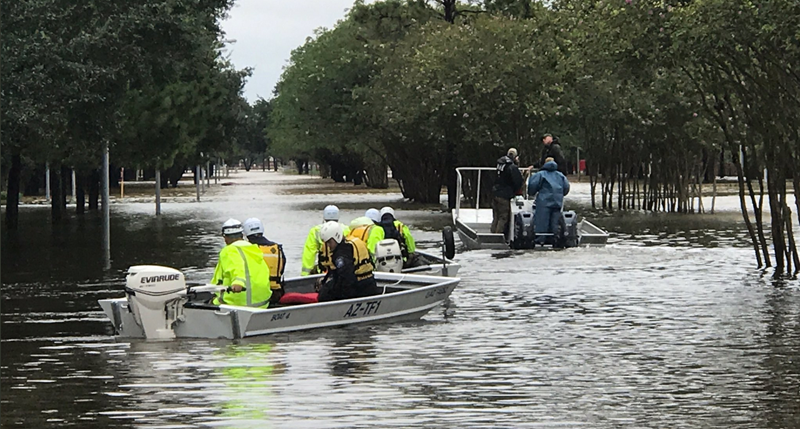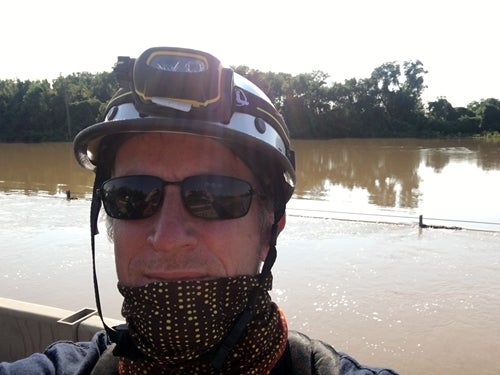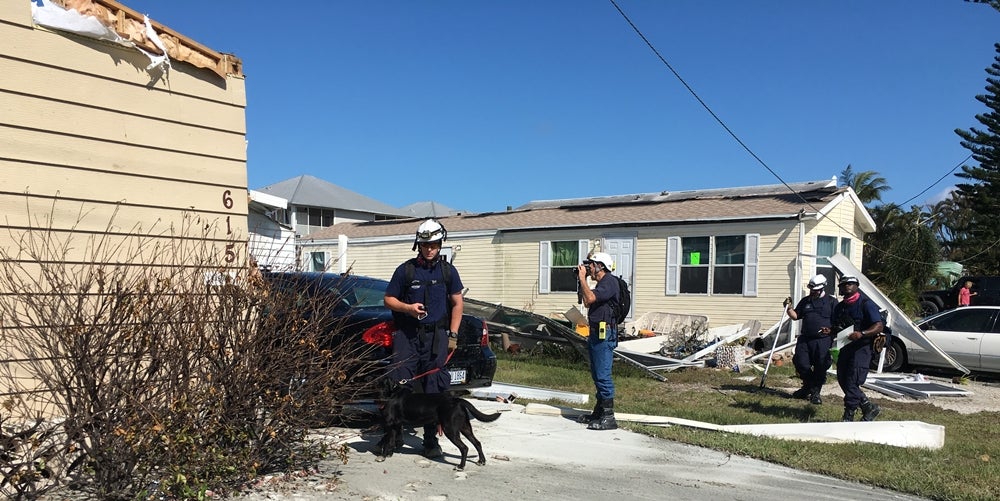
Emergency Management professor served as first responder for Hurricanes Harvey and Irma
Frustrating. Exhausting. Rewarding. Those were the range of emotions Scott Somers experienced during his 21 days as a member of a Phoenix rescue team dispatched by the Federal Emergency Management Agency to Hurricanes Harvey and Irma.

A professor of practice in the College of Public Service and Community Solutions, Somers is a retired Phoenix firefighter and a member of an elite Phoenix Fire Search and Rescue Team, Arizona Task Force One or AZ-TF1.
FEMA mobilized the Phoenix rescue team the weekend Hurricane Harvey made landfall near Corpus Christi, Texas. For Somers and his teammates, it was then "hurry up and wait."
“Team members want to get to work, but that can take time,” said Somers. “Most of our time initially was spent on the road or in staging.”
The 80-member Phoenix team sent to Texas was selected based on each member’s specialty and deployment readiness. Team members are also cross-trained to perform search and rescue and handle hazardous materials, medical and logistics. Somers served as a hazardous material expert ready to provide decontamination, air monitoring, and sampling.
FEMA directed AZ-TF1 to rescue people and pets in Katy Texas, a small town about 30 miles west of Houston where hundreds of homes were under several feet of water.
“Our team conducted boat operations in Katy following a levee breach there,” Somers said. “We removed several people from the flooded area.”
The Phoenix team was then sent to Wharton Texas, about 60 miles southeast of Houston. They worked with the National Guard and other search and rescue teams taking out several trucks full of evacuees.
For Somers, that’s the rewarding part of urban search and rescue.
“When the boats went out and recovered people caught by the flooding, there is a sense of accomplishment,” recalled Somers. “We did the job we were trained to do.”
Somers said rescuers don’t think about long hours and horrible conditions until afterward.
“When you do get to work it us under austere conditions: rain, heat, humidity,” said Somers. “You don’t really realize it at the time, but it hits you when the work stops. It’s exhausting,” said Somers.
Ten days after Hurricane Harvey hit Texas, the Phoenix search and rescue team was demobilized for one day before being forward deployed to the Orlando Convention Center to wait out Hurricane Irma. Once it was safe, Somer’s team was sent to where Hurricane Irma made landfall, Marco Island and a small fishing village called Goodland where they went house to house.

“Goodland was 'ground zero' for Irma mainland landfall,” Somers said. “No rescues were made, but we conducted wide area search operations to ensure everyone was out.”
Somers was deployed for three weeks. As a professor, he says there are valuable lessons he can pass along to his students. There is also a new trend that he’d like to study further. The specialty trained FEMA search and rescue teams were joined by a private group of boat owners from Louisiana and nearby areas called the Cajun Navy. Somers would like to examine the role of volunteers responding to natural disasters.